The trolleys now used by tourists climbing Ijen Crater were never intended as recreational vehicles. Originally, these carts were handmade tools designed by sulfur miners to transport large chunks of sulfur—often weighing between tens to hundreds of kilograms—from the crater’s depths up to the collection post.
The Origins of the Ijen Crater Trolley
Before trolleys were introduced, sulfur miners had no choice but to carry heavy sulfur loads using bamboo baskets. This exhausting journey involved climbing steep, uneven trails for several kilometers, with 70–90 kg of sulfur on their shoulders. The risk and physical toll were immense.
As a response to these hardships, miners created a rudimentary trolley made of wood and iron to ease their workload. Initially, it functioned solely as a mining aid to transport sulfur from the crater floor to the weighing station. However, miners later realized that the trolleys could serve a dual purpose—helping not just themselves, but also tourists who struggled to climb the steep trail.
Transformation into Tourist Transport
The growing number of tourists eager to witness the Ijen Crater’s rare blue fire and sulfuric acid lake sparked a new idea among miners: offering trolley ride services. Known as “ojek trolleys,” these carts were modified to accommodate passengers, though their design remained basic—akin to a sturdy pushcart.
A typical trolley is operated by a team of three miners: two pulling from the front and one pushing from behind. The fare may seem steep due to the intense physical effort required. Prices are around IDR 1,000,000 for a one-way trip and IDR 1,500,000 for a round trip.
“So that you don’t get tired of climbing, we can use the trolley service at a cost of 1,500,000 up and down. Just go up 1,000,000.”
Cultural and Economic Impact
Beyond functioning as transportation, these trolleys have become a vital source of supplemental income for local miners. Compared to the unstable and hazardous work of sulfur mining, trolley services offer a more consistent way to earn a living.
Despite offering a practical solution to tourists, the trolley system has been met with mixed opinions. Some view it as labor exploitation, citing the physical demands of pushing a loaded trolley uphill. But for miners, this work is a valuable opportunity in a region with limited economic options.
Now, the Ijen Crater trolley has become an iconic part of the area’s tourism, setting it apart from other destinations. For travelers, it’s not only a novel way to experience the mountain but also a testament to the resilience and creativity of the local community.
Climbing Route and Tourist Tips
Before beginning the climb to the Ijen Crater, hikers first reach the Paltuding Post, located at approximately 1,800 meters above sea level. This post serves as the parking and camping area for climbers.
The trail from Paltuding to the summit spans about 3.4 kilometers, including the trail’s twists and turns. However, this distance doesn’t account for the additional 700 meters from the summit down to the crater lake.
Climbing Ijen typically takes 1.5 hours, though depending on physical fitness and rest stops, it can range from one to three hours.
Why Is Ijen Crater So Popular?
Located at 2,769 meters above sea level, Ijen Crater is famous for housing the world’s largest highly acidic crater lake. The lake is around 200 meters deep and spans an area of 5,466 hectares.
“Why is the Ijen Crater famous and a leading tourist attraction, this is because the Ijen Crater is an acidic crater lake located at the peak of Mount Ijen with a lake depth of 200 meters and a crater area of 5,466 hectares. The Ijen Crater Lake is known to be the largest strong acidic water lake in the world.”
These unique features—alongside the once-unexpected trolley rides—make Ijen Crater a must-visit destination in East Java. It not only offers stunning natural beauty but also highlights the ingenuity and determination of the local people who continue to shape tourism through innovation.
Maybe you are interested in reading the following article:

Discover 8 Must-Visit Beaches in Banyuwangi for an Unforgettable Coastal Adventure
Banyuwangi, a regency located at the eastern tip of Java Island, is not only renowned for its cultural richness but also for its breathtaking coastal destinations that attract both domestic and international tourists. Its long coastline presents an array of marine attractions, ranging from soft white sandy shores to pristine waters teeming with coral reefs..... read more

Seblang Bakungan 2025: A Sacred Dance Revival That Echoes Through Banyuwangi’s Spirit
Hello, fellow travelers! Prepare to be enchanted by the mesmerizing soul of Banyuwangi’s culture. The sacred Seblang Bakungan ceremony is returning from June 10 to 12, 2025, starting each evening at 6:00 PM local time. The festivities begin with a vibrant bazaar showcasing local micro-businesses, a curated dance series, and the much-loved Jazz Patrol perfo... read more

Discover Bedil Island: The Untouched Jewel of East Java’s Marine Wonderland
Located in the remote waters of Pancer, Sumberagung Village in the Pesanggaran District of Banyuwangi, Bedil Island is rapidly emerging as one of the most captivating hidden marine paradises in East Java. Its untouched natural charm and strategic location have positioned it as a top destination for both nature lovers and adventure seekers. Surrounded by... read more
Contact Us
If you have any questions, please contact us.
-
Hotline
+6281336278367 -
Whatsapp
+6281336278367 -
Email
pepejavatours@gmail.com

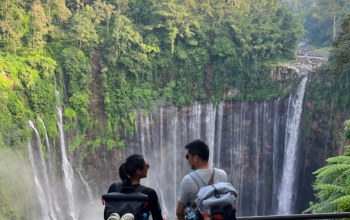
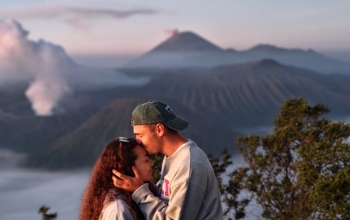
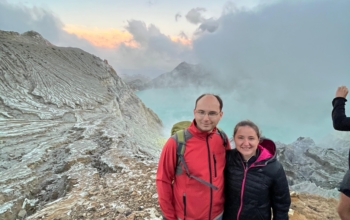
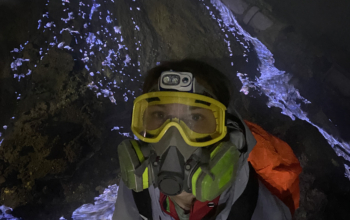

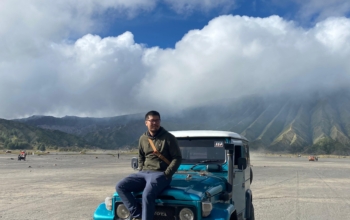
No comment yet